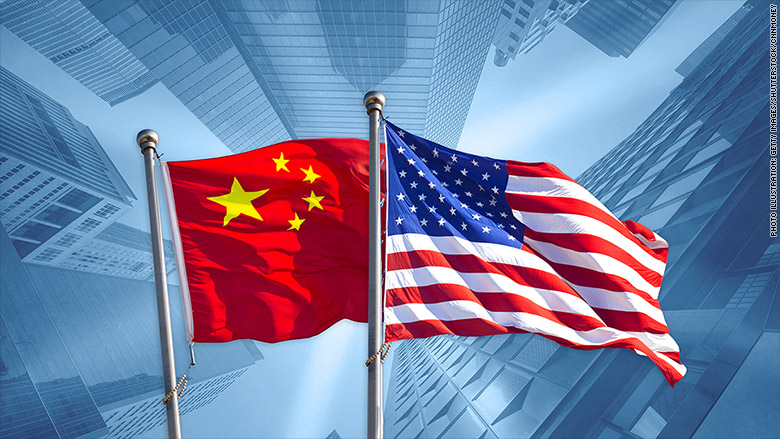Losing the Pacific: The futility of re-joining TPP

Diplomatic Courier |14 August,2018
Losing the Pacific: The futility of re-joining TPP
by Josh Cohen
On April 12, amid rising tensions in the US - China bilateral relationship and increasing fears of a now-realized trade war, President Donald Trump announced that he would consider rejoining the Trans-Pacific Partnership (TPP), a free trade agreement crafted during the Obama administration that would have established new regulatory frameworks and drastically lowered tariffs on trade between member states. Senator Ben Sasse (R-Nebraska) applauded Trump’s announcement, saying “the best thing the United States can do to push back against Chinese cheating now is to lead the other 11 Pacific nations that believe in free trade and the rule of law.” There may be some advantageous economic benefits for the United States if it were to rejoin this free trade agreement, but the fact remains that there is a clear agenda-setter in the Asia-Pacific, and it is not the United States. This is one important thing that has eluded Senator Sasse and others cheering the possibility of renewed American leadership in Asian trade: re-joining TPP at this stage is not leading.
The Obama administration originally campaigned for TPP on the basis that it would allow the United States to essentially write the rules of trade in the region and act as a counterbalance to China’s growing influence. Former Japanese ambassador to the United States, Ichiro Fujisaki, described the partnership as “economic glue to cement ties with like-minded countries.” While the economic benefits of the deal were highly-touted, TPP was meant to be much more than a free trade agreement. It was a geopolitical move that carried great significance in the changing strategic landscape of the Asia-Pacific.
Of course, any hopes that TPP would play a significant role in restructuring the Asian economic playing field were dashed when Donald Trump became president. He immediately made good on his campaign promise to withdraw the United States from TPP, much to the dismay of the other signatories. The remaining states subsequently amended the deal to create the Comprehensive and Progressive Agreement for Trans-Pacific Partnership (CPTPP), which is currently in the process of being ratified by its member states. However, without the participation of the United States—which accounts for more than 20 percent of the world’s GDP—CPTPP doesn’t carry the same clout as its original incarnation.
Nevertheless, slightly over one year after the United States’ scuttling of TPP, President Trump appeared to open the door to the possibility of a US return. However, even if the United States were accepted back into the agreement—which is certainly not a given—the geopolitical effect would not be the same as it might have been a year ago.
Given the timing of the announcement, Trump’s about-face on TPP will likely be interpreted as a belated attempt to protect American interests in the face of an escalating US-China trade war, a threat looming ever larger on the horizon. If the United States does, in fact, integrate itself into the trade agreement, those specific economic interests could very well be buoyed by the pact. However, re-integration into TPP will do little to reverse American soft power decline.
Since the inception of the Bretton Woods system, the United States has been a leading force in establishing value frameworks which dictate the rules of various global interactions, including financial, diplomatic, political, etc. However, China’s influence has been on the rise for many years now, and with economic clout comes ideological influence. China’s alternative model of national development, commonly known as the Beijing Consensus, is used to highlight its juxtaposition to the Washington Consensus, a concept which has evolved over time but is now commonly used to generally describe the policies advocated for developing countries by the United States and Western international financial institutions such as the International Monetary Fund and the World Bank.
Beijing’s attempts to expand the influence and appeal of the Beijing Consensus include the trillion-dollar Belt and Road Initiative (BRI) and the Regional Comprehensive Economic Partnership (RCEP), a free trade agreement comprised of all the member states of the Association of Southeast Asian Nations (ASEAN), as well as Australia, China, India, Japan, South Korea, and New Zealand. Seven of the eleven current members of TPP are part of the RCEP negotiations. The framework has many similarities to TPP, including greatly reduced tariffs on a wide array of goods. With its fifteen-member states in one of the world’s most densely populated regions, RCEP would encompass approximately 40 percent of the world’s GDP and nearly half the global population. Negotiators hope to conclude a deal on RCEP by the end of the year. Projects like BRI and RCEP—especially if they are successful—will severely undercut any strategic value held by TPP.
This is not to say that China will simply—or easily—supplant the United States as a regional hegemon in the Pacific. China’s aggressive moves in the South China Sea and elsewhere have not been earning much goodwill from its neighbors in recent times, and its overall appeal still fails to measure up to that of the United States in most regions. However, as projects like BRI and RCEP continue to expand in scope and influence, China’s ability to set the agenda and dictate the rules of economic engagement will likewise continue to grow. If the United States is going to effectively retain its regional influence, it will have to do much more than revive TPP.





